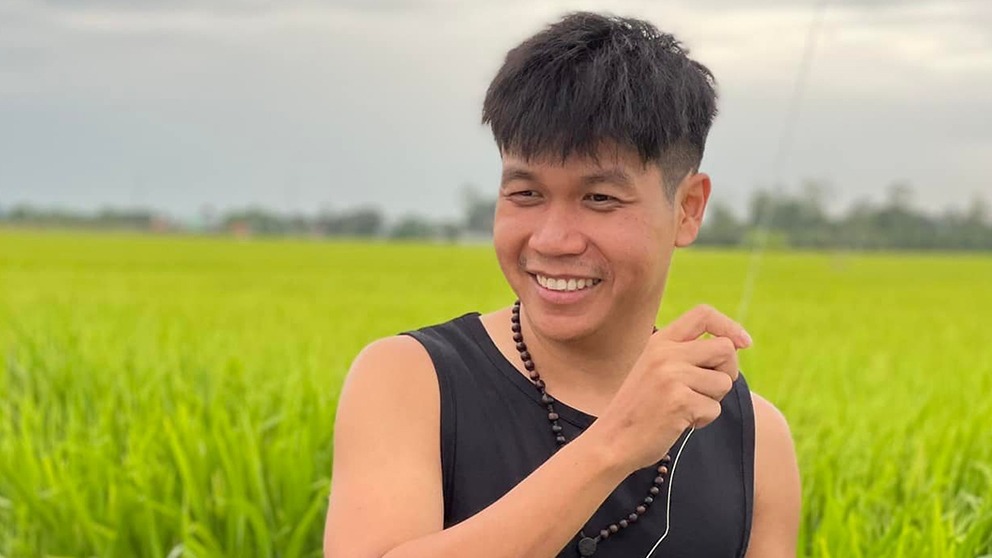Art, skills, and talent play a vital role in the design of characters for video games. There are so many aspects to consider when it comes to the way a character is designed, from new trends and the requests of clients to the feedback from the fans; when it comes to the experts in the field, who better to talk to than someone who is closely familiar with the process.
Today we will be taking a closer look at the process of creating video game characters with Duy Khanh Nguyen. His experience in the field and genuine love for his art are visible through the way he talks about his profession and the incredible characters he has worked on. If you want to learn more about his views on the art of character design, then keep on reading!

So, could you tell me about your career? When did you start working on animation? How did you get started? Did someone inspire you to join this field?
From a really young age, my interest was in drawing – I really like to draw. So, I knew that my career would turn out to be odd somehow because back in the day, where I come from, we didn’t have much. I’m originally from Vietnam, so when I was young, we didn’t have much in terms of school and a clear career path for people who do art. All I knew was what the people around me and my family told me: doing art would make me poor.
So, what inspired me? It was those Disney movies I watched when I was young. Beauty and the Beast is my favorite; it’s fantastic to see an animated film that’s so beautiful. But, a little later in life, the only clear career paths for Art are becoming a graphic designer, a painter, or an architect. In Vietnam, you need to pass specific exams to get into college, and I failed those exams.
That actually turned out to be a good thing because it forced me to study 2D animation in a no-name school. I chose to study 2D animation because that was my dream, despite the risk of not having a job later. And you know, because of the fact that the program wasn’t as good as I had hoped, I studied very hard on my own and expanded my interests a bit. I’ve learned foundation art knowledge there. When I finished school, I started working. Then, I found out there were a bunch of video game outsourcing companies in Vietnam.
They were big, making assets for big companies like Microsoft and Electronic Arts. So, I worked on this car asset, a very detailed car for Forza, you know? I’ve been working on it for months, and it was enjoyable, so I thought to myself, “Oh God, now I’m making this thing that’s gonna be in a game”. That’s so cool, right? But on the other hand, it’s also very technical, so they even request the stitches on the car seat be counted as accurately as possible.
That’s what led to my spark; I thought to myself that I’m interested in gaming, so if I study art, I can work in the gaming industry. Awesome! So, after working in an outsourcing company for a few years, I moved on, decided to study abroad, came to the US, and did my Master’s in a school in San Francisco. It was a university program focused on game art – it was very fun. It was the most fun and exciting year of my life to hang out with a bunch of nerds and make stuff.
Looking back on it, I don’t know how I had the energy to do all of that. It’s a feeling of uncertainty, doing all of that, but, you know, if you feel that you like it so much, I say go for it.
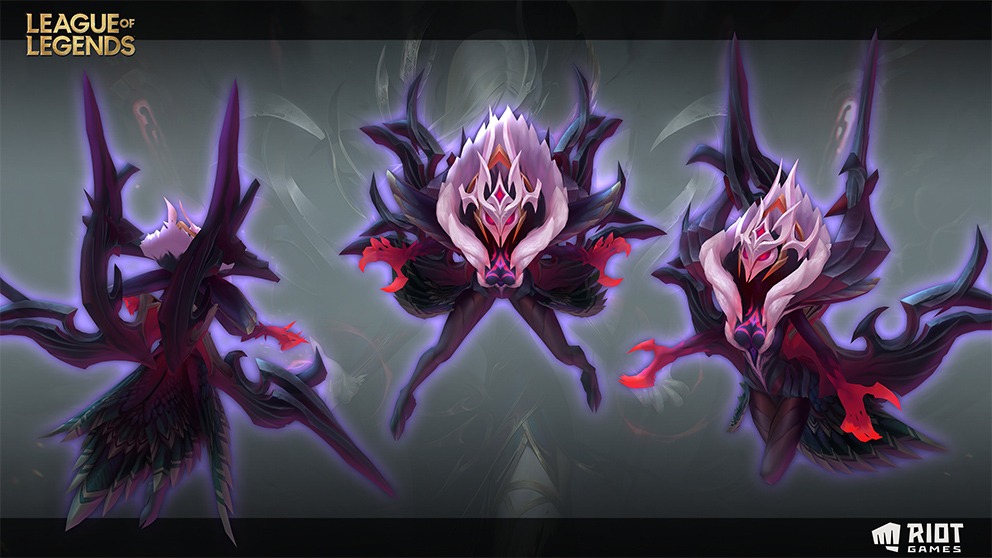
It worked out for you, that’s so cool! You mentioned that you started your internship at Riot, and you’ve progressed a lot in the company since then. You must really like working for Riot then?
Yeah, that’s true. My dream company used to be Blizzard. I mean, of course, it’s everyone’s dream company, right? I had a clear image in my mind while I was in Vietnam that if I ever came to California and ever visited Blizzard’s HQ, I’d see all the statues they have on display. I’d take a photo with them, walk down all the hallways, and listen to the StarCraft soundtrack while doing it. That would be epic.
Then, I got to participate in student art contests two times; I won first place once, and then third place the second time. I don’t remember exactly how it went, but what’s important is that whoever places first would visit Blizzard’s HQ. So, an absolutely crazy experience that I had was that I couldn’t sleep the night before the winners were supposed to be announced. It was my destiny, you know? So, I’m waiting for Blizzard to respond whether they want me as an intern that summer or not, and they didn’t respond.
I got an offer from Riot shortly after that, and I was like, “Riot? Who are they?” Then I took a look at League of Legends, which they’re so well-known for. In my mind, I was comparing them to Blizzard back in the day and LoL back then is not as refined. But then I was an international student, and I really wanted that industry experience, so I’ll go for it.
I believe that what happened was for the best because Riot is a great place for new artists like me to join and learn. It’s been a really good experience from day one.

That’s awesome! How do you feel working for Riot now? Does it feel like you have your own creative freedom or is it a more structured approach to art?
Everyone has their own opinion about the company they work for. It all depends on the perspective and the environment you work in. I was a 3D Environment artist because I was afraid to study anatomy at first. I remember joining some seminars, which were a complete upgrade and a change of perspective for me as an artist. It’s important to understand that this is a AAA game company with high-quality standards, and coming into it was hard for me. Every time there were changes needed in my artwork, my colleagues were super welcoming to help me really understand how to get better at it.
You gotta recognize your strengths and weaknesses. You gotta understand where you can put your input so that the time and energy you’ve spent working is meaningful.
There are millions of gamers who play League of Legends daily. So, the number of people who will pass by your artwork, your asset, is really cool. Even if the asset you’ve worked on is small, it could be perceived by a million people – they’ll see what you do, and they’ll take it seriously. That’s why it all hit me so hard; art in the gaming industry. If you come to me and tell me that you need a trash bin drawn, I’m going to give you the best way that I could ever make it.
If you don’t feel fulfilled [from] what you’re doing, then what’s the point? You need to do something that’ll make you happy with the results of your work, no matter what it is. As an artist, you really have to love your work – it’s your baby. And like everything, it’s gonna hurt sometimes, but it’ll always pay off to carry it through to the end.
Take your time, this valuable, most expensive resource, and try to do something meaningful with it rather than wasting it on something that you don’t like.
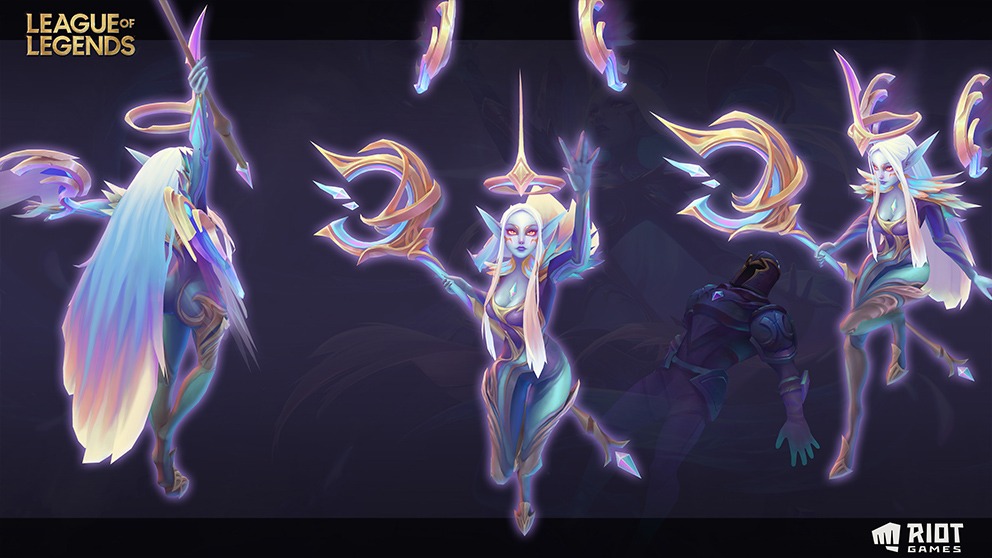
That’s very valuable advice actually. So, what kind of a process do you follow when it comes to creating a new character design from scratch, could you tell us a bit about that?
Design, for me, comes from the story. You’ve gotta have a story for the design to mean something. So, when we design a character, it’s based on who they are, what their personality is like, and what’s their backstory. I usually start by writing down a few keywords. So, what the design’s gonna be will also be determined by these keywords because I’ll use them to collect references – usually three to four max. And then, all that’s left is to infuse your personality, style, and approach to art to create something interesting. Aside from storytelling, the most essential part of creating a character is making them memorable and provocative in a way.
The question is always, you know, why should I care? Why should the audience care about my design? It’s a male or a female, but what’s unique about them? And nowadays, we can do many creative things with that. You can go with the appeal, an attractive appearance, or even sexy – sexy is provocative, right? Elements like enhanced curves and proportion. But provocativeness can also come into conflict with the character you’re designing.
It’s about the internal character traits that make them interesting, translating to their exterior appearance. I think that it’s tough to create an original idea nowadays because so much is already discovered. The best thing you can do is put your personal spin on archetypes, find an edge you can express yourself in, and make it for yourself really, and people will resonate with that, they will connect with your taste. The popularity of your works will align with the popular taste of the majority.

When it comes to character design trends, like what you’ve just mentioned, how do they affect your perception of art? Do you still follow trends even if they differ from your preferences, or do you stick to your more personal art style?
Trends are great, you know? You follow the right trend, and people will like what you’ve made a bit more. For example, let’s talk about the female aesthetic. So way back in the day, let’s say 20 years ago. Female figures were depicted tended to be more idealized and curvier – it was a specific approach to beauty at the time. About 20 years ago now. The ideal female figure tended to be super slim because fashion became popular. And because they’re a fashion model, their figure must reflect that.
But, in the last ten years, there’s been a revolution on that front, with more body positivity shining through. I’d say that in the previous three or four years, people especially like to see female figures who are more toned, more representative of how everyday women might look rather than what came before. In that sense, if you can align with the community and what they want from you as an artist, you’ll bring real value to them. People who like your work also look into your personality, your soul, in a way, with what you’ve created for them. The question is whether we create artwork for the community or for ourselves. It’s still hard to find the balance here so be mightful. So, my work is fueled by that idea.
It’s like my teacher once told me, that the artist’s job is very odd but very honorable. You must be proud of your work to let the beauty in it shine through, and that’s what attracts people to it.
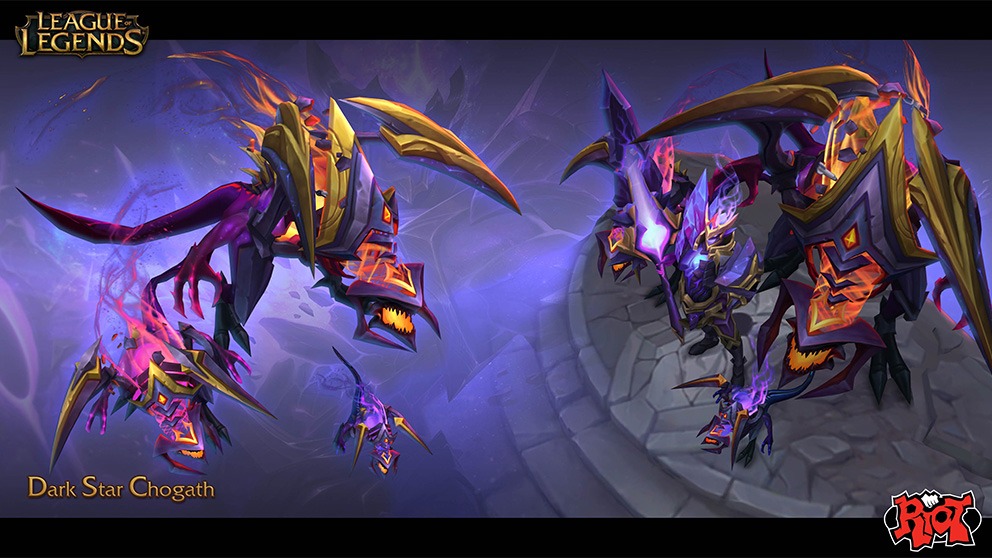
So, is there a sense of uniformity in the designs you make, meaning that you follow the same process and parameters when you create something new?
No, not entirely. At Riot, we have these things called Concept Jams, where people can “jam” crazy ideas and pitch them, right? While those are fun, these ideas still need to serve a purpose. For example, you could create something fresh and unique but it might be a bit out of LoL common art. For example, a very beautiful zombie if you see that there’s an interest in it in the community for beautiful zombies.
I think that the creativity to build something new is always there in Riot – as an organization, we are focused on thinking about who plays our game, what they want, and what their interests are. Then we follow up.
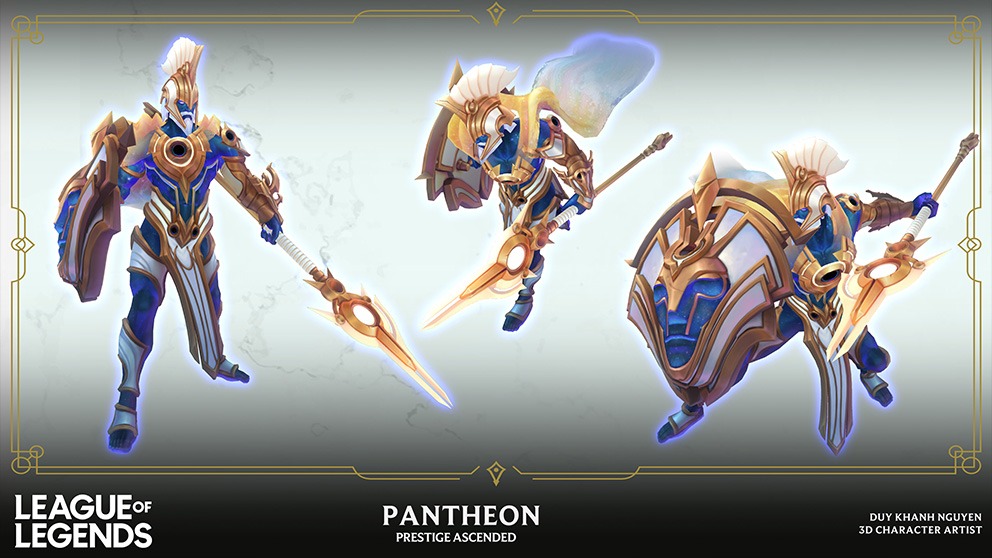
When you run into difficulties while creating a character, how does this affect your design approach? How do you cope with it and still stick to your plans and ideas for the character?
The most challenging part of the process for me is the proper collection of data. An artwork is an asset that has an applied purpose and role in the game. Most of what we create is based on data – we research what players like or dislike, their comments on different characters, etc. So, how can we come out with accurate, objective data and then work with it? At Riot, we take feedback very seriously and act on player interaction to create something that will be meaningful to them.
Our team is passionate about the player experience, so we’re always gonna try to do the best we can – it’s challenging cause if you create something that’s the same as before, people might not appreciate it. So, how do you create something new and unique but still carry what appeals to the existing stuff simultaneously? That’s the tricky part.
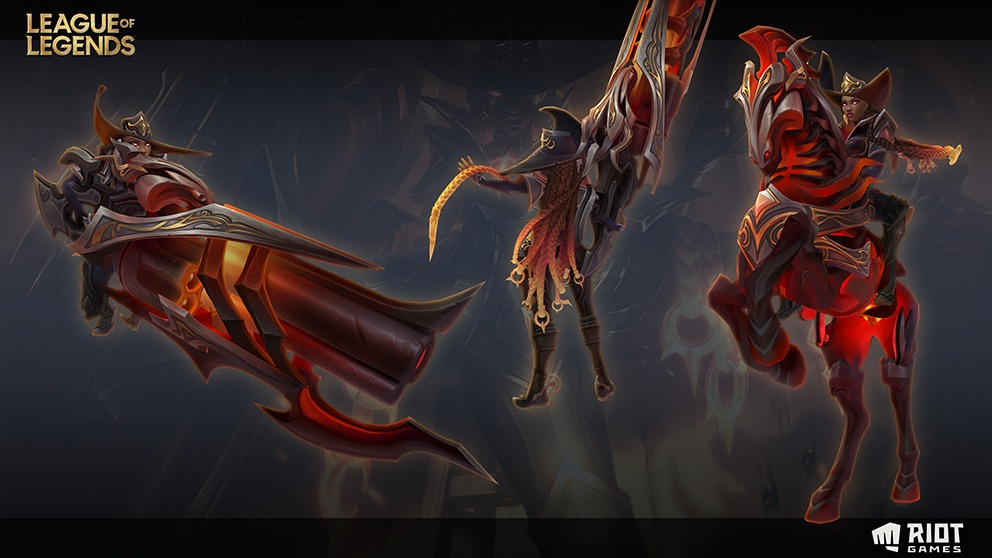
You talked about putting yourself into your art. What kind of tips do you have for aspiring artists who want to work in the gaming industry?
First off, I think it’s important to know exactly what it is that you want. I’ve heard many stories from people who didn’t know what they wanted to do in life – others were just resilient and hardworking. People who are resilient and stick to their goals will always do awesome. I had a friend when I was an Undergraduate – he drew female figures so beautifully that his work stood out in class and even the instructors couldn’t reach his level.
But what happened was he just laid his interests in the wrong place when his goal was to be famous and make money. When he realized that art might not be the best career for him if he wanted to become rich or popular, he gave up. Another friend I know was in my Grad School.
He was hopeless at the start and I was thinking to myself that he better give up and choose something else. Turns out I was wrong. After years of trying and practicing, he became the Principal artist of a game company and leads projects. I am so happy for him and admire his effort. He doesn’t give a damn about how people think and the end result. He just really loves doing art.
I don’t care about money so much – I just love doing art, you know? So, I spend my time on that. I keep moving and I keep learning.
Just start drawing, practicing, and we will get better at it. I drew like a baby at first, everybody does stick figures, right? When I say practice, it means 10-18 hrs a day, every day despite how terrible we are at first. It’s like practice is the food and water we need. But it’s practice and practice – don’t tie yourself to a reward. If you are interested in beautiful, fulfilling work, you won’t even feel like you’re working. It’s hard but it is meant to be. Most of all, that is fun.
For a young artist, you need to know what you want – so if you like gaming, there are many career paths there to follow. It could be game design, QA testing, programming, or anything, right?
Art may not be the first thing you should think of when you start thinking about game development. You wanna do game art? You have to love art – it’s essential. If the gaming industry isn’t there someday, will you still keep doing art? For me, that’s a yes. I’m still gonna do it because I love my career path. It’s not like you’re gonna draw for an hour and then say, “I’m good”, you know?
Go all the way with it. Love it. Embrace it. Every moment you spend doing it all.
From all of us at the BGeek team, we would like to thank Duy again for taking the time to do this interview with us and share all this valuable insight into his art and craft.
Duy Khanh Nguyen’s ArtStation: https://www.artstation.com/lionkid158
